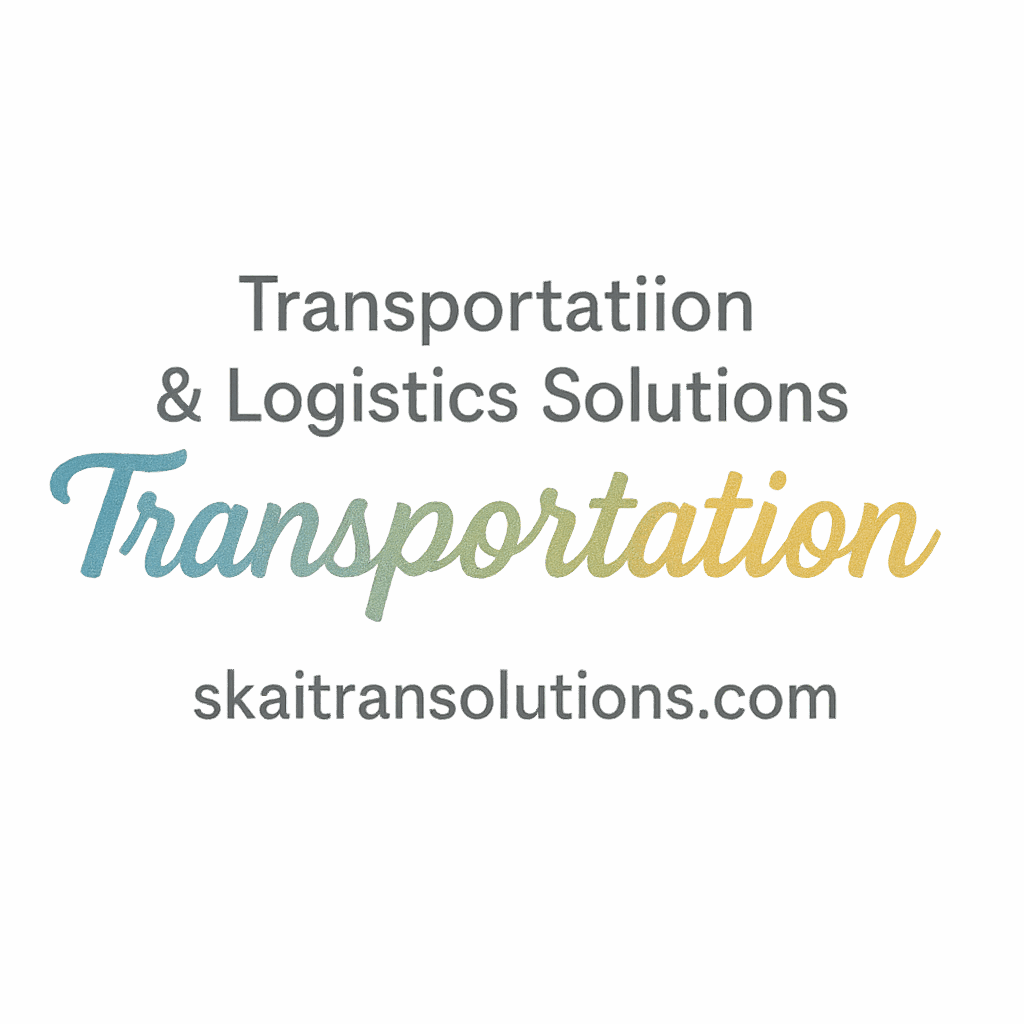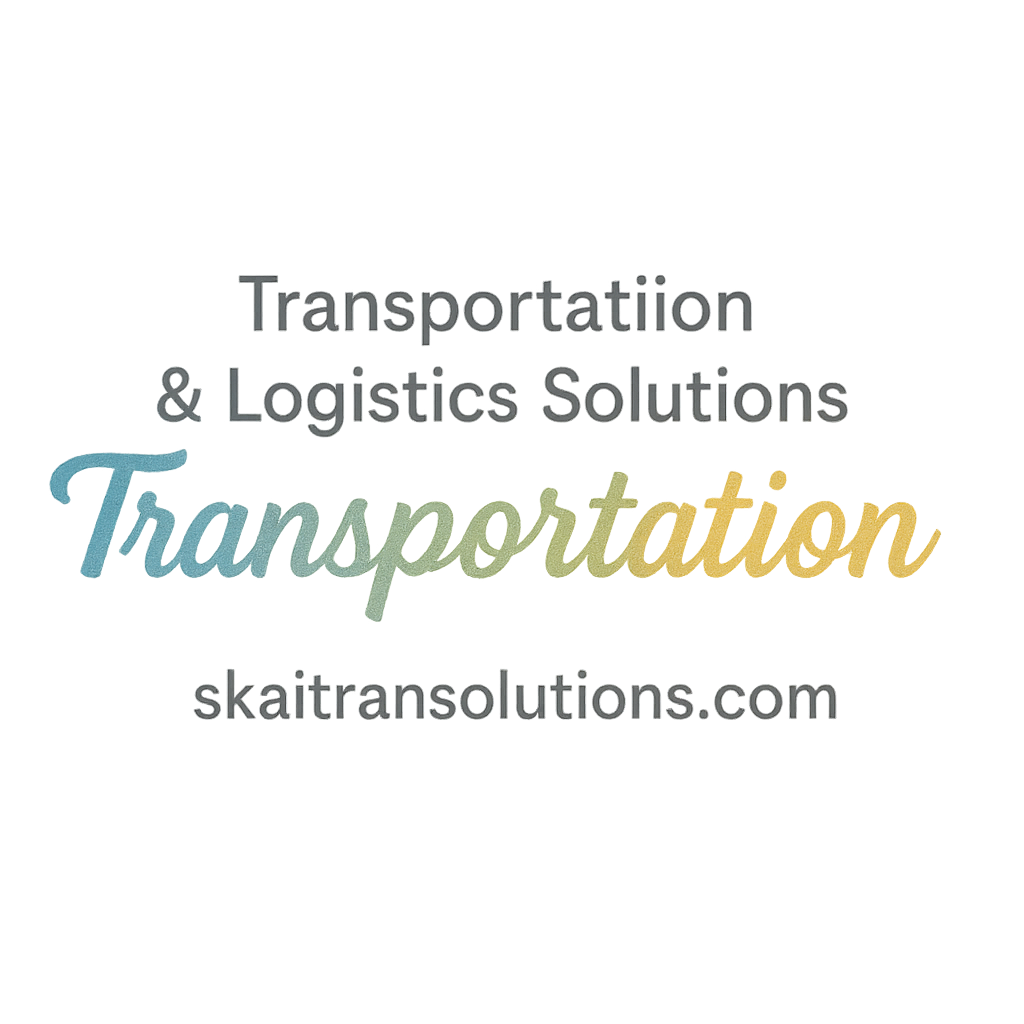Transportation is undergoing a massive transformation, and by 2025, the way we move will look vastly different than it does today. With advancements in technology, infrastructure, and sustainability, the transportation industry is set to make significant strides. From autonomous vehicles to hyperloop travel, let’s explore the top 10 trends that will shape the future of transportation in 2025.
The Rise of Autonomous Vehicles
What Are Autonomous Vehicles?
Autonomous vehicles (AVs) are self-driving cars that can navigate without human intervention. Powered by advanced sensors, AI algorithms, and machine learning, these vehicles are capable of making real-time decisions, ensuring safer and more efficient travel.
The Technology Behind Autonomous Vehicles
The technology behind AVs includes LiDAR sensors, radar, cameras, and artificial intelligence. These components work together to create a detailed map of the surroundings and allow the vehicle to respond to road conditions and traffic signals.
Benefits for Drivers and Society
Autonomous vehicles promise to revolutionize transportation. They will reduce traffic accidents caused by human error, cut down on congestion, and make commuting more accessible for people with disabilities or the elderly. Plus, autonomous vehicles are expected to dramatically reduce fuel consumption and carbon emissions.
Interested in learning more about how autonomous vehicles are impacting the transportation industry? Check out this article!
The Impact of Electric Vehicles
The Shift from Gasoline to Electric
The shift towards electric vehicles (EVs) has gained tremendous momentum in recent years, and by 2025, EVs will likely account for a significant portion of the global vehicle fleet. As countries worldwide set stricter emission standards, more car manufacturers are investing in electric vehicle technologies.
Benefits of Electric Vehicles
Electric vehicles are a key player in reducing greenhouse gas emissions and combating climate change. They are more energy-efficient than gasoline-powered cars, reduce dependency on fossil fuels, and provide a cleaner, quieter transportation option.
Challenges and Solutions
While EV adoption is growing, there are challenges such as range anxiety, charging infrastructure, and battery disposal. However, advancements in battery technology and the expansion of fast-charging networks are expected to overcome these hurdles in the near future.
Explore more about the cost-reduction strategies for electric vehicles and how they’re making EVs more affordable for consumers.
Hyperloop: The Future of High-Speed Travel
What is Hyperloop?
Hyperloop is a proposed mode of transportation that uses low-pressure tubes to transport passengers or cargo at incredibly high speeds. Imagine traveling from one city to another in less than an hour—sounds like science fiction, right? But with the continuous research and development by companies like Virgin Hyperloop, this could soon become a reality.
How Does Hyperloop Work?
The hyperloop system is based on vacuum tubes with electromagnetic pods. The pods float inside these tubes, and by eliminating air resistance, they can travel at speeds over 700 miles per hour, making them faster than airplanes in some cases.
The Potential of Hyperloop for Future Transportation
Hyperloop could dramatically cut down travel time between major cities, reduce congestion on highways, and offer an energy-efficient alternative to air travel. Its potential is vast, but for it to become widespread, there’s still much work to be done in terms of infrastructure and testing.
Read about how transportation technology innovation is paving the way for hyperloop to become a reality.
Sustainable Transportation
Green Transportation Solutions
Sustainability is at the forefront of future transportation trends. Governments and industries are working to develop green transportation alternatives that reduce emissions and minimize environmental impact. Electric cars, public transportation systems running on clean energy, and bicycle-sharing programs are just a few examples of how cities are going green.
The Role of Hydrogen-Powered Vehicles
Hydrogen-powered vehicles offer another eco-friendly option. These vehicles run on hydrogen fuel cells, emitting only water vapor as a byproduct. This zero-emission technology is still in its infancy but holds great promise for a cleaner future.
Renewable Energy and Eco-Friendly Transportation
Incorporating renewable energy sources such as solar and wind into transportation infrastructure is another key trend. For example, solar-powered charging stations and wind-powered electric vehicle fleets are being explored to make transportation even more sustainable.
If you’re curious about how supply chain and logistics are adapting to sustainability practices, we have a guide that highlights these shifts.
Digitalization and AI in Transportation
AI for Traffic Management
Artificial intelligence is revolutionizing traffic management systems. AI-powered traffic lights, predictive algorithms, and automated incident detection are helping reduce traffic jams and improve road safety.
Smart Logistics and Supply Chain Integration
The future of logistics will rely heavily on digitalization. AI and machine learning are being used to optimize routes, reduce fuel consumption, and improve delivery times, creating a smarter, more efficient supply chain.
Enhanced Customer Experience Through AI
In transportation, AI is also improving the customer experience by offering personalized travel recommendations, real-time updates, and even predictive maintenance alerts for vehicles.
Learn more about the latest operational best practices incorporating AI to improve transportation systems and logistics.

Blockchain in Transportation
What is Blockchain Technology?
Blockchain is a decentralized ledger that records transactions across many computers in such a way that the registered transactions cannot be altered retroactively. In transportation, blockchain is being integrated into logistics, ensuring secure, transparent, and efficient transactions.
Benefits of Blockchain in Logistics and Transportation
Blockchain technology can enhance transparency in supply chains, reduce fraud, and improve traceability of goods. In transportation, it’s also being used to streamline insurance claims, tracking of shipments, and cross-border payments.
How Blockchain Enhances Safety and Transparency in Transport
By using blockchain for safety inspections, vehicle history records, and compliance tracking, the transportation industry can ensure more reliable and safe services. Smart contracts could even automate and enforce compliance with regulations.
Explore compliance and how blockchain technology can help the industry meet regulatory standards and improve safety inspections.
Smart Infrastructure and Cities
What Makes Infrastructure “Smart”?
Smart infrastructure refers to the integration of digital technology into the physical environment to enhance the functionality of transportation systems. From intelligent traffic lights to smart roads that can charge electric vehicles while driving, the future of transportation will be heavily reliant on smart infrastructure.
Smart Roads and Autonomous Vehicles
As autonomous vehicles become more common, smart roads will be essential to ensure safe and efficient travel. These roads could communicate directly with AVs, adjusting speed limits or rerouting traffic based on real-time data.
The Role of IoT in Transportation Infrastructure
The Internet of Things (IoT) plays a critical role in smart infrastructure. Sensors embedded in roads, bridges, and vehicles can collect data that helps improve traffic flow, monitor road conditions, and even predict maintenance needs.
Learn about how vehicles are being integrated with smart infrastructure for a seamless driving experience.
Ride-Hailing and Shared Mobility
The Growth of Ride-Hailing Services
Ride-hailing services like Uber and Lyft have already changed the way we get around, but in the future, these services will evolve. With the rise of autonomous cars and electric vehicles, ride-hailing could become more efficient and environmentally friendly.
Shared Mobility and Environmental Benefits
Shared mobility, which includes carpooling, bike-sharing, and public transportation, is gaining popularity as an eco-friendly and cost-effective solution. As cities grow and traffic congestion increases, shared mobility could become an essential component of urban transportation.
The Future of Mobility as a Service (MaaS)
Mobility as a Service (MaaS) integrates various transportation services into a single, accessible platform. In 2025, MaaS will enable users to plan, book, and pay for multiple modes of transport in one seamless experience, reducing the reliance on private car ownership.
Find out more about performance metrics for MaaS services and how they’re impacting the transportation industry.
Big Data and Predictive Analytics
Big Data in Transportation Logistics
Big data analytics is transforming the logistics industry. By analyzing vast amounts of data, companies can optimize routes, reduce delivery times, and improve customer satisfaction.
The Role of Predictive Analytics in Traffic Management
Predictive analytics is helping cities forecast traffic patterns, anticipate congestion, and manage public transportation systems more effectively. These insights enable better planning and real-time decision-making.
Improved Forecasting with Big Data
With the integration of big data, transportation companies can predict demand, optimize vehicle usage, and reduce empty miles traveled, leading to a more efficient and cost-effective system.
Explore how KPIs in data analytics are improving transportation logistics and customer satisfaction.
Urban Air Mobility
What is Urban Air Mobility?
Urban Air Mobility (UAM) refers to the use of drones, air taxis, and other aerial vehicles to transport people and goods within cities. By 2025, we may see small flying vehicles designed for short-range urban travel.
Drone Taxis and Airships
Drone taxis are poised to revolutionize city commuting, offering quick and efficient travel over congested roads. Airships, also being developed, will provide cargo transportation solutions, especially in hard-to-reach areas.
The Future of Air Transportation in Urban Areas
Urban air mobility has the potential to reduce traffic, alleviate congestion, and offer faster alternatives to ground transportation. However, regulatory challenges and infrastructure development must first be addressed.
Learn how insurance and regulation are key to the future success of urban air mobility.
Conclusion
The transportation industry in 2025 is bound to be marked by innovation, sustainability, and greater efficiency. From autonomous vehicles and electric cars to hyperloop travel and urban air mobility, these trends are set to reshape how we move. As technology continues to evolve, the future promises safer, more eco-friendly, and faster ways to travel.
FAQs
- What are the most exciting trends in transportation for 2025?
The rise of autonomous vehicles, electric vehicles, and hyperloop travel are among the most exciting trends in the transportation industry for 2025. - How will autonomous vehicles impact road safety?
Autonomous vehicles are expected to reduce accidents caused by human error, improving road safety overall. - What is the role of AI in transportation?
AI is being used for traffic management, smart logistics, predictive analytics, and improving customer experiences. - What is Hyperloop and how does it work?
Hyperloop is a high-speed transportation system that uses vacuum tubes and electromagnetic pods to transport passengers quickly between cities. - How will electric vehicles affect the environment?
Electric vehicles will help reduce carbon emissions and improve air quality by replacing gasoline-powered vehicles. - What is MaaS (Mobility as a Service)?
MaaS is a system that integrates various transportation modes into a single platform for easier planning, booking, and payment. - What is Urban Air Mobility (UAM)?
UAM refers to the use of flying vehicles, like drones and air taxis, for short-range urban travel to reduce congestion.


